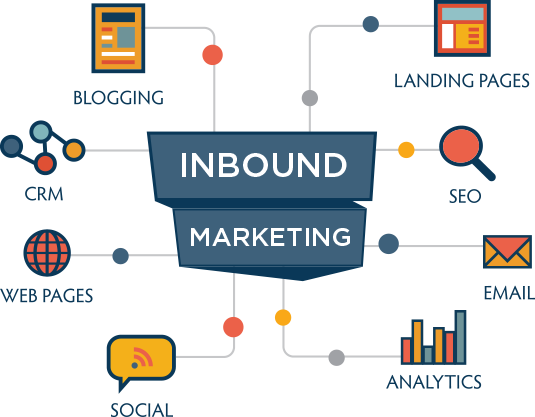Guide to Creating A Comprehensive Inbound Marketing Plan

Table of Contents
- Inbound Marketing: Examining the Term
- Drafting an Inbound Marketing Plan
- Lay Your Marketing Goals out
- Know Who your Buyers are
- Identify Buying Triggers of Your Personas
- Research Relevant Keywords
- Conduct a Competitor Analysis
- Draft a Content Strategy
- Leverage your Social Media Channels
- Don’t forget to Choose the Right Technology
- Keep Optimising
- Key Takeaways
- Conclusion
- FAQs
As much as it is rewarding, inbound marketing is too complex and convoluted to understand in a short time. And even if you do get its basics right, implementing it is a pain. There are too many facets like blogs, newsletters, search engine optimization, social media marketing, etc., that you need to master to reel in customers successfully.
Hence, you need an inbound marketing plan to ensure that your inbound marketing strategy works as intended. Having a plan will help you enumerate all the specifics of your marketing strategy that you need to prioritize. In addition, you will know what actions to take at each stage of the marketing funnel to get the most out of your marketing efforts.
But to be honest, chalking out a plan takes a lot of time. You need to sit with a team, go through several brainstorming sessions, come up with clever ideas and whatnot. Hence, to save you time and trouble, we have curated this guide to help you devise the right inbound marketing plan for your organization. However, before you dive in, how about looking at the definition of inbound marketing.

Inbound Marketing: Examining the Term
If you were born in the late 20th century or the early 2000s, you would remember salespersons coming to your door trying to sell you their wares. You would also recall advertisements on television and newspapers trying to be highly catchy and entertaining. And who can forget those intrusive phone calls from companies that would more often than not irritate us?
Inbound marketing changed all this. Today, if a brand wants to sell its products or services, it needs to address the needs and demands of the consumers. It needs to tell people that it has what they need. And to do so, it needs to create and publish insightful blogs, make informative videos and social media posts, optimize its website, and ultimately build trust in the consumers.
To sum it all up, inbound marketing is a strategy that businesses and organizations implement to attract, educate, engage and convert their target audience without disrupting their lives.

Drafting an Inbound Marketing Plan
Inbound marketing is all about delivering the right content to the right people. And to do so, you need a well-thought-out plan.
The following steps will help you create an inbound marketing plan to fuel your organization’s growth and drive sales.
1. Lay your marketing goals out
Before you put your heart and soul into creating the best marketing plan your firm will ever see, you need to know why you are creating it. And for that, you need to list out all the inbound marketing goals you hope to achieve with a marketing plan.
Keep in mind that the goals should be attainable, in line with your organization’s current requisites, measurable and timely. In short, your marketing goals should be S.M.A.R.T. To do so, you should first assess your current marketing strategy and identify the key metrics that you want to target.
Once you have listed all the objectives, compile them into a well-structured document and distribute its copies to your team members so that everyone is on board.
2. Know who your buyers are
If your firm sells adult diapers, you sure do not want to target people aged 25-40. Now, this example might seem too obvious. But, when it comes to less specific products, such as deodorants that smell like chocolate, you need to define who your buyers will be cleared.
You need to create buyer personas. Buyer personas are fictional characters whose traits resemble real people. And these personas are your firm’s ideal clients.
A buyer persona can consist of information such as occupation, age group, geographical location, social media platform preferences, purchasing behavior, family size, etc. There is no one-size-fits-all formula to crafting buyer personas, and you can very well include more specific information in them.
3. Identify buying triggers of your personas
Once you know who your customers are, the next step is to understand what will make them buy your products. In other words, you need to outline their buying triggers. Buying triggers are situations in which a customer needs to make an urgent purchase.
For example, you have a smartphone with terrible battery life (one hour, to be specific). You obviously need a new smartphone because, well, who doesn’t. But you start thinking, “I can make it last until the next payday. No big deal.” However, the very next day, you find out that you have to go on an official trip, which means traveling for hours. You immediately rush to your nearby smartphone store and buy one with long battery life. In this case, the upcoming trip was your buying trigger.
Buying triggers are immensely useful to an inbound marketing strategy as they help you outline buyers’ specific needs and tell them why your products will cater to them.
4. Research relevant keywords
We cannot stress the importance of researching keywords and cataloging them enough. Keywords and keyphrases are how consumers find the products and services they are looking for. And these are the words and phrases that you want to use in your inbound marketing content to reach out to the right people.
You can use Google’s keyword planner, the Semrush Keyword Magic Tool, or other similar tools to research keywords.
5. Conduct a competitor analysis
If you are just starting your business or have years of experience in your industry, knowing what your competitors are doing never hurts. A competitor analysis lets you understand what marketing tactics your rivals are applying and whether they are getting the returns on it. You can then emulate (not copy) their tactics to improve your marketing efforts.
Furthermore, reading your competitors’ ways can help you spot areas that are still unchartered and where you can out-perform them.
6. Draft a content strategy
Content is the very foundation of any inbound marketing strategy. After you know who your target audiences are and what triggers them into making a purchase, it is time to create content that will lead them to your business.
However, randomly creating content will do you more harm than good and will only waste your time and resources. What you need instead is an inbound content strategy.
You need to document what content formats (video, infographics, blogs, newsletters, etc.) you will use, draft content for each stage of the marketing funnel, keep a constant content publishing pace and ensure that your content reaches its destination.
Also, ensure that you add a content calendar to your content strategy. A content calendar will help you generate relevant content consistently.
7. Leverage your social media channels
A few years ago, having a presence on social media might have been optional but, in 2022, social media profiles are a must for all businesses regardless of scale. Today, social media marketing strategies are one of the core marketing strategies for several organizations. And understandably so.
Social media is a highly potent tool capable of increasing a business’s reach on the web by a huge margin. After all, that’s where most of the netizens spend a measurable chunk of their time.
To improve your social media efforts:
- Regularly post catchy and relevant content
- Be thorough with the quirks and features of each social media platform
- Reply to your followers’ comments and DMs
- Create a lot of video content (Instagram reels, Youtube shorts, etc.,)
- Research and post at fixed hours of the day for maximum reach
8. Don’t forget to choose the right technology
A large part of devising an inbound marketing strategy goes into strategizing. There will be a lot of documentation, brainstorming, and research. But, at the end of the day, you will implement your collective marketing efforts using marketing platforms.
Hence, when drafting a marketing plan, make sure that the platforms and technologies you are using or going to use do not hinder your operations in any way.
Our top picks for inbound marketing platforms are HubSpot’s marketing automation tool, Salesforce’s CRM, and Mailchimp for email marketing. But you can always prefer the ones that suit your needs the best.
9. Keep optimizing
An inbound marketing plan is not a one-time thing. Once the plan is in motion, you need to constantly monitor, update and alter it to achieve your objectives (that you set at the very beginning of this blog).
To successfully optimize your inbound marketing program, you first need to mark the key areas that will need optimizing the most. Secondly, you need to maintain an optimization schedule to ensure all facets of your marketing program are getting attention. Thirdly, you need to keep an eye on all the metrics of your program (website conversion rates, social media stats, ad click-through rate, etc.)
Key Takeaways
- Inbound marketing refers to marketing that caters to the consumers’ needs and pain points without being intrusive.
- An inbound marketing plan lays the groundwork for successful inbound marketing.
- To form a marketing plan, you need to list your objectives and understand your buyers.
- A content strategy is a must for inbound marketing.
- Constant optimization is needed to ensure the long-term benefits of an inbound marketing strategy.
Conclusion
Inbound marketing is undoubtedly the marketing of the new age. But, it is complex and time-consuming. Hence, to truly benefit from it, brands need a blueprint to help them organize their marketing efforts.
This guide expounds on what needs to be done to create an inbound marketing plan. Follow it and master the art of inbound marketing. Good luck!
FAQs
Inbound marketing is a marketing approach that relies on creating and distributing content to address the requirements of consumers.
Inbound marketing is less interfering than outbound, attracts qualified prospects, creates brand awareness, and helps brands build a loyal customer base.
An inbound marketing plan entails laying out your business objectives, analyzing your target audience, doing keyword research, creating a content strategy, and monitoring it constantly.
Latest Blogs
Explore how Google’s 2025 AI search updates triggered ranking chaos. Learn actionable strategies to adapt your SEO for AI Overviews, zero-click searches, and SERP volatility. Stay ahead now.
Learn how to rank on AI search engines like ChatGPT, Perplexity, and Gemini by optimizing your content for authority, structure, and relevance. Stay ahead in AI-driven search with this strategic guide.
Explore the best healthcare SEO services for your medical practice. Improve online visibility and effectively reach more patients in need of your services.


